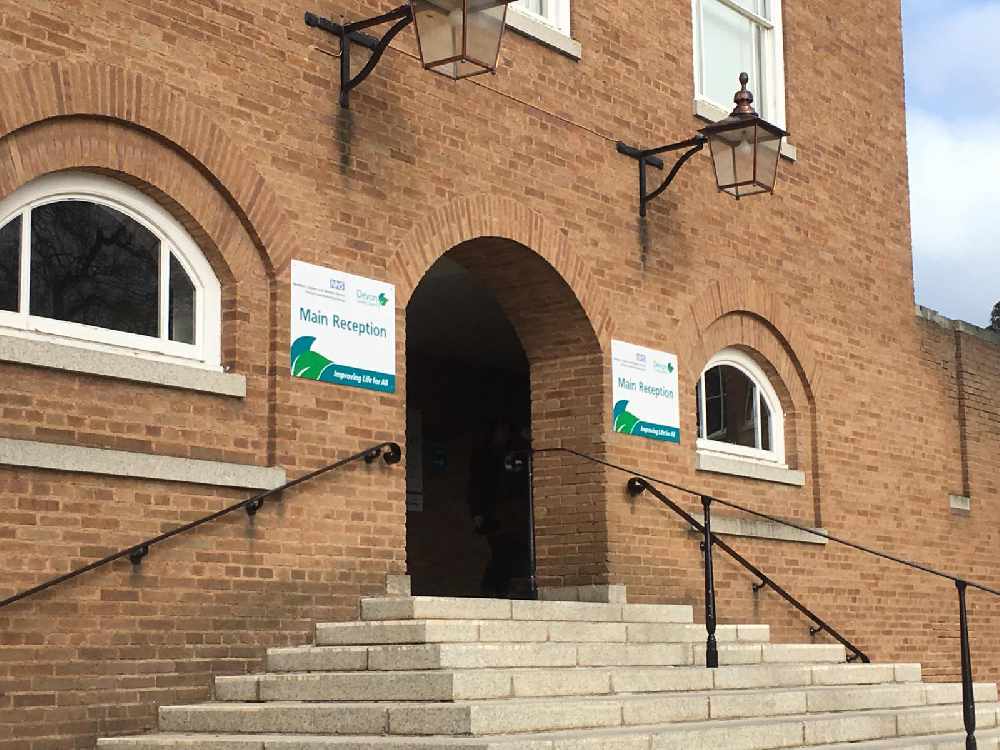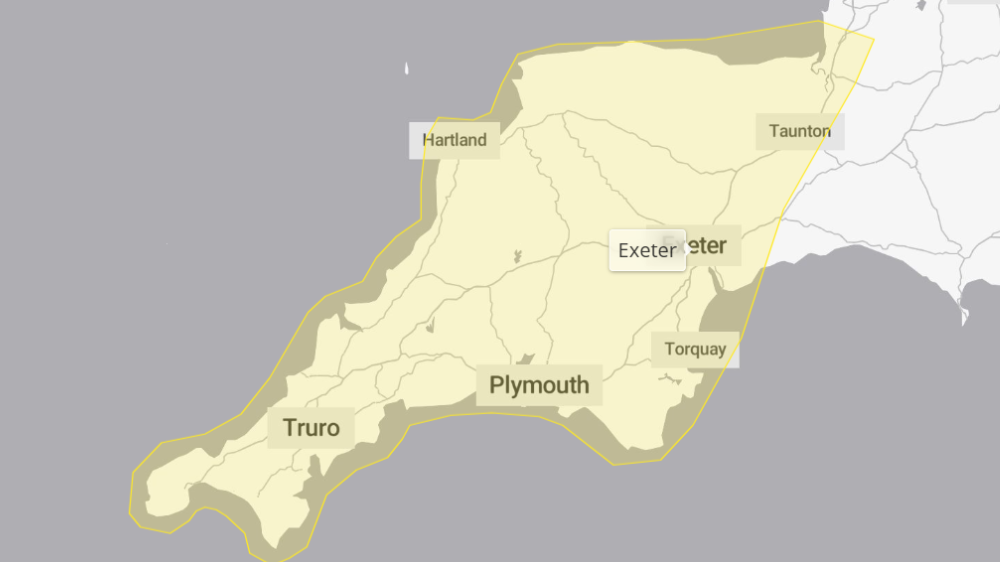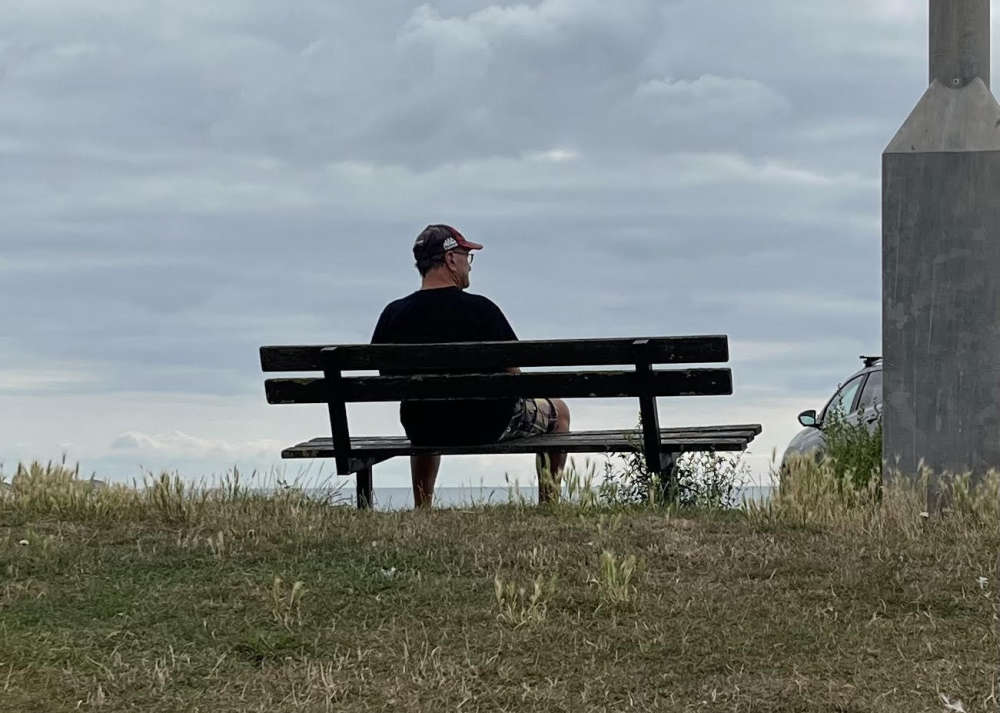
It's unlikely to be built on for the next three to five years
County hall in Exeter is unlikely to be built on for the forseeable future, despite a call to use some of the site for key worker housing.
Located off Topsham Road in Exeter, one of the key routes into the city centre, the Grade II* listed building sits on 22 acres of land and has been the county council’s headquarters since the 1960s.
It cost £2.37 million to maintain last year, a figure expected to fall £600,000 this year, and with Devon in a housing crisis and many council staff no longer working from the office full-time, some councillors believe parts of the site could be put to better use.
At a full meeting of the council on Thursday [6 October], a motion by Liberal Democrat councillor Martin Wrigley (Dawlish) called for the “antiquated” site to be “re-modelled” into rental homes with some reserved for NHS and social care staff.
“Converting the existing office blocks and building new homes on the enormous supply of parking space would provide a highly desirable and green residential location with good connection to the RD&E hospital site and the city centre,” his motion stated.
“The hundreds of rented flats delivered would not only provide homes for local families, but also a long-term rental income for the council that should exceed the cost of out-of-town office space.”
However, the Conservative-controlled council rejected it, along with a subsequent watered-down amendment from Cllr Wrigley which included asking the council to “consider other uses for excess spaces such as parts of county hall for full or partial conversion to revenue generating rented, residential accommodation for key workers and others.”
Tory councillors instead voted to confirm that “in the short to medium term (three-to-five years) the council does not have plans to dispose of county hall.”
Their successful amendment also backed a review of the use of council assets as part of its financial sustainability programme to “identify opportunities for the provision of (in particular) DCC key worker accommodation.”
Debating the issue, Cllr Wrigley clarified he was not calling for the council to build on the vast amount of green space on the site, rather to convert existing buildings and turning car parks into purpose-built flats for rental.
“We do have what really to the outside world here looks like a gentleman’s club, with oak panels, with big sofas, with lots of space, with a cricket field, with a [skittles] alley I discovered in the back of the Coaver Club [a social club and gym for council staff].
He added: “Be bold. Take the decision. Go for change. Repurpose these assets. Provide something good for the community – some rented, socially rented homes for key workers in the city, where it’s sustainable, where it’s useful.
“It will reduce some of the traffic on the main road because we won’t have so many people working here if we move them to purpose-built offices where we already have them.”
Fellow Lib Dem councillor Alan Connett (Exminster & Haldon) mentioned other listed sites that have been converted, including the city’s former Exe Vale Hospital, and added: “I don’t think anyone is proposing that we sell county hall, we close it down, that we should go somewhere else.
“I think what we’re saying is, in the changed world of covid where more people are working from home and rightly so, where fewer people need to travel in here, maybe there’s an opportunity to do the right thing.
“The right thing might be to say, can we have residential use? Can we bring in an income which supports the capital, which indeed the leader of the council says he’s been so successful at at just £13 million. Think, there could be more coming in to help with the capital work.”
Labour councillor Rob Hannaford (Exwick & St Thomas) agreed that “some of the site could possibly and should be used” for key worker housing, especially around the Matford Lane area, but added: “I wouldn’t be supportive of turning all of county hall into that.
“I think we’ve done a lot of restructuring here. I think the post-covid work trends are still not set. I think people will start coming back. A lot of space has been moved around.”
He also said the site is “absolutely alive” in the evenings: “There’s young people playing here, sport is going on and it’s a real hub of community activity.”
But Councillor Paul Crabb (Conservative, Ilfracombe) questioned “the assumption that we should just convert whatever bit of real estate we can find, we can wonder around, close offices [and] see if we can wang some flats in there.”
“The most efficient way to run the council I suspect is to stack a load of portacabins up outside, but what sort of message does that send?”
He added: “You’ve got local councils, local plans. You can develop affordable homes at the drop of a hat if you’ve got the will to do so and you’ve got the planning officers prepared to put it in.”
Council leader John Hart (Conservative, Bickleigh & Wembury) said the site is also used by the NHS and the coroner’s office and said: “This place is pretty well used.
“We don’t know what’s going to happen at the end of the day as far as covid is concerned, but certainly if the last four weeks is anything to go back, there’s been a substantial increase in the number of people using these offices.”
He also said the Exe Vale Hospital was vacant before it was converted and rejected Cllr Wrigley’s “gentleman’s club” claim: “It’s actually a working hub and I think our staff are being insulted when you say it’s an old man’s club.”
Another part of Cllr Wrigley’s motion to “withdraw the sites at Manor Farm, Markham’s Farm and other county farms from local plan allocations for housing and preserve farm viability” was also rejected.
The council instead backed the Conservative amendment to “support the inclusion of strategic DCC farm land in relevant local plan allocations (including land at Markham’s and Manor Farm) as part of the council’s work to support housing provision across the county.”
It would also ensure that “farm holdings remain viable and where possible land is replenished (subject to financial resources being available) to maintain the farms estate at [around 10,000] acres.”
 Rocket builder careers in Cornwall to soar
Rocket builder careers in Cornwall to soar
 'Twas the weather warning before Christmas
'Twas the weather warning before Christmas
 Police watchdog investigates after fatal Plymouth crash
Police watchdog investigates after fatal Plymouth crash
 Torbay memorial bench prices top London's
Torbay memorial bench prices top London's
 There’s No Place Like an Exeter Panto
There’s No Place Like an Exeter Panto
